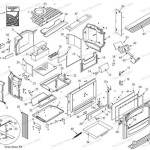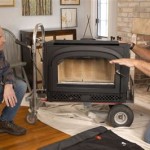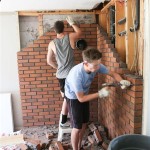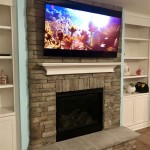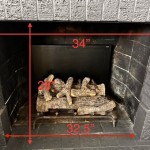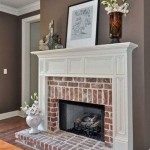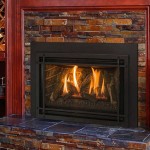```html
Gas Fireplace Repair in Northern Virginia: Ensuring Warmth and Safety
Gas fireplaces offer a convenient and efficient way to add warmth and ambiance to homes in Northern Virginia. Unlike traditional wood-burning fireplaces, gas fireplaces require minimal maintenance and provide instant heat at the flip of a switch. However, like any mechanical appliance, gas fireplaces can experience malfunctions, requiring professional repair services. Addressing these malfunctions promptly is crucial for ensuring safe operation and optimal performance.
This article aims to provide a comprehensive overview of gas fireplace repair in Northern Virginia, covering common issues, troubleshooting steps, safety considerations, and why professional assistance is often necessary. Understanding these aspects helps homeowners maintain their gas fireplaces effectively and ensure a cozy and safe home environment during the colder months.
Common Gas Fireplace Problems
Several common issues can arise with gas fireplaces, impacting their functionality and safety. Identifying these problems early can prevent more extensive damage and costly repairs. Some of the most frequent issues include:
Pilot Light Problems: A pilot light that consistently goes out is a common complaint. Several factors can contribute to this, including a dirty pilot orifice, a faulty thermocouple, or a weak gas supply. A dirty orifice can restrict gas flow, preventing the pilot light from staying lit. A thermocouple is a safety device that senses the heat from the pilot light; if it fails, it will shut off the gas supply to prevent gas leaks. A weak gas supply, potentially due to low gas pressure in the line, can also extinguish the pilot light.
Ignition Issues: If the pilot light is functioning correctly but the main burner fails to ignite, the problem likely lies within the ignition system. This system could involve a spark igniter, a hot surface igniter, or an electronic ignition module. A faulty igniter may not produce a sufficient spark to ignite the gas, while a failing hot surface igniter may not reach the necessary temperature. In electronic ignition systems, a malfunctioning module can prevent the ignition sequence from initiating.
Flame Appearance Issues: The appearance of the flames can indicate problems within the gas fireplace. Yellow or orange flames, as opposed to a clean, blue flame, suggest incomplete combustion. This can be caused by insufficient air supply, dirty burner ports, or a vent obstruction. Sooting, the formation of black carbon deposits on the fireplace glass or surrounding surfaces, is another sign of incomplete combustion and potential ventilation problems. Uneven or weak flames can also indicate gas pressure issues or clogged burner ports.
Odor Issues: A strong gas odor, especially when the fireplace is not in use, is a serious safety concern. This indicates a potential gas leak, which requires immediate attention. A faint gas odor when the fireplace is operating can sometimes be normal, especially after initial lighting, but a persistent or strong odor warrants investigation. Another potential odor issue is a burning smell, which could be caused by dust accumulation or debris within the fireplace.
Glass and Ventilation Problems: Cracks in the fireplace glass are a safety hazard and require immediate replacement. Damaged glass can compromise the fireplace's integrity and potentially lead to gas leaks or explosions. Ventilation issues, such as blocked vents or a malfunctioning flue, can also cause problems. Proper ventilation is essential for removing combustion byproducts and preventing carbon monoxide buildup within the home. Inspecting and cleaning the ventilation system regularly is crucial for safe operation.
Troubleshooting Steps for Minor Issues
While many gas fireplace repairs require professional expertise, some basic troubleshooting steps can be performed by homeowners to address minor issues. These steps should only be undertaken if the homeowner feels comfortable and confident working with gas appliances, and safety precautions should always be prioritized. If any doubt exists, contacting a qualified technician is the safest course of action.
Checking the Gas Supply: The first step in troubleshooting is to ensure that the gas supply is turned on and functioning properly. Verify that the gas valve to the fireplace is open and that there are no issues with the main gas line. If other gas appliances in the home are not working correctly, there may be a problem with the gas supply to the entire house, requiring attention from the gas company.
Cleaning the Pilot Orifice: A clogged pilot orifice is a common cause of pilot light problems. To clean the orifice, first, turn off the gas supply to the fireplace. Carefully remove the pilot assembly, referring to the manufacturer's instructions. Use a small, thin wire or a specialized pilot orifice cleaning tool to gently clear any debris from the orifice. Reassemble the pilot assembly and turn the gas supply back on. Attempt to relight the pilot light.
Cleaning the Burner Ports: Dirty burner ports can cause uneven flames or incomplete combustion. To clean the burner ports, first, turn off the gas supply to the fireplace. Carefully remove the burner assembly, referring to the manufacturer's instructions. Use a soft brush or a vacuum cleaner with a brush attachment to remove any dust or debris from the burner ports. Avoid using sharp objects that could damage the burner ports. Reassemble the burner assembly and turn the gas supply back on. Observe the flame appearance to ensure proper combustion.
Checking the Thermocouple: A faulty thermocouple can prevent the pilot light from staying lit. To test the thermocouple, light the pilot light and hold the control knob depressed for the recommended time (typically 20-30 seconds). If the pilot light goes out when the knob is released, the thermocouple may be failing. A multimeter can be used to test the thermocouple's voltage output, but this requires specialized knowledge and equipment. If the thermocouple is faulty, it should be replaced by a qualified technician.
Inspecting the Ventilation System: Ensure that the fireplace vents are clear of any obstructions, such as leaves, debris, or snow. Check the flue for any signs of damage or blockage. Birds or other animals can sometimes build nests inside the flue, obstructing airflow. If the ventilation system is blocked, it should be cleared to ensure proper combustion and prevent carbon monoxide buildup.
Why Professional Gas Fireplace Repair is Often Necessary
While some minor issues can be addressed through troubleshooting, many gas fireplace problems require the expertise of a qualified technician. Working with gas appliances can be dangerous, and improper repairs can lead to gas leaks, fires, or carbon monoxide poisoning. Professional technicians have the necessary training, experience, and equipment to diagnose and repair gas fireplace problems safely and effectively.
Gas Leak Detection and Repair: Detecting and repairing gas leaks requires specialized equipment and knowledge. Gas leak detectors can identify even small leaks, and technicians are trained to repair gas lines and connections safely. Attempting to repair a gas leak without proper training can be extremely dangerous.
Complex Component Replacement: Replacing complex components, such as gas valves, igniters, or control modules, requires specialized knowledge and tools. These components are often interconnected, and improper installation can lead to malfunctions or safety hazards. Professional technicians have access to replacement parts and the expertise to install them correctly.
Carbon Monoxide Testing: Carbon monoxide is a colorless, odorless, and deadly gas that can be produced by improperly functioning gas appliances. Professional technicians can perform carbon monoxide testing to ensure that the fireplace is operating safely and not producing excessive levels of carbon monoxide. A carbon monoxide detector should also be installed in the home to provide an early warning of carbon monoxide buildup.
Ensuring Code Compliance: Gas fireplace installations and repairs must comply with local building codes and regulations. Professional technicians are familiar with these codes and can ensure that all work is performed in compliance. This helps to ensure the safety and legality of the installation.
Warranty Considerations: Many gas fireplaces come with warranties that may be voided if repairs are performed by unqualified individuals. Hiring a professional technician can help to ensure that the warranty remains valid and that any covered repairs are performed correctly.
In conclusion, gas fireplaces provide a valuable heating solution for homes in Northern Virginia. However, regular maintenance and prompt repair of any issues are essential for safe and efficient operation. While some minor problems can be addressed through basic troubleshooting, many issues require the expertise of a qualified gas fireplace technician. Prioritizing safety and seeking professional assistance when needed is crucial for ensuring a warm and safe home environment.
```
Fireplace Repair Northern Va Jcs Home Services

Gas Fireplace Repair Services Maryland Nova Dc

Gas Fireplace Repair Maryland Northern Virginia Dc

Home Amazing Flame Full Service Gas Fireplace Repair Company

Nicholas Chimney Sweeping Stove Fireplace Services Vienna Virginia

Fairfax Va Gas Fireplace Services Legacy Home Comfort

Gas Fireplace Service Log Maintenance

Electric Gas Fireplace Repairs And Installation Technicians In Fairfax Alexandria Arlington Surrounding Areas

Gas Fireplace Service Log Maintenance

Who Should Service A Gas Fireplace Northern Va Winston S
Related Posts

